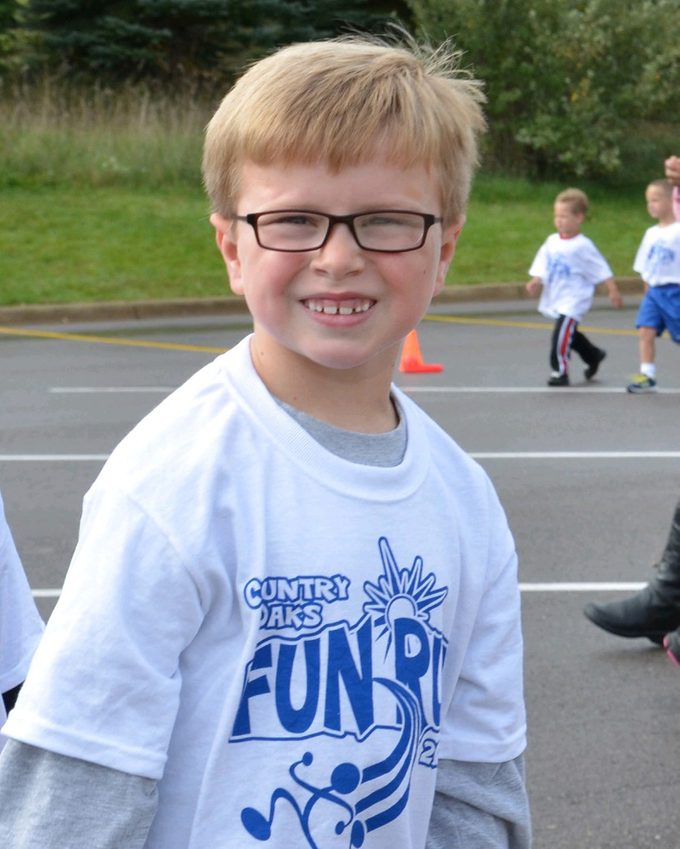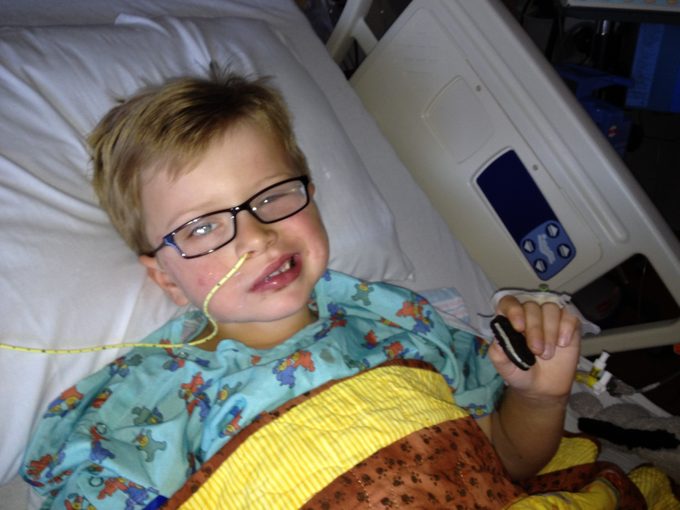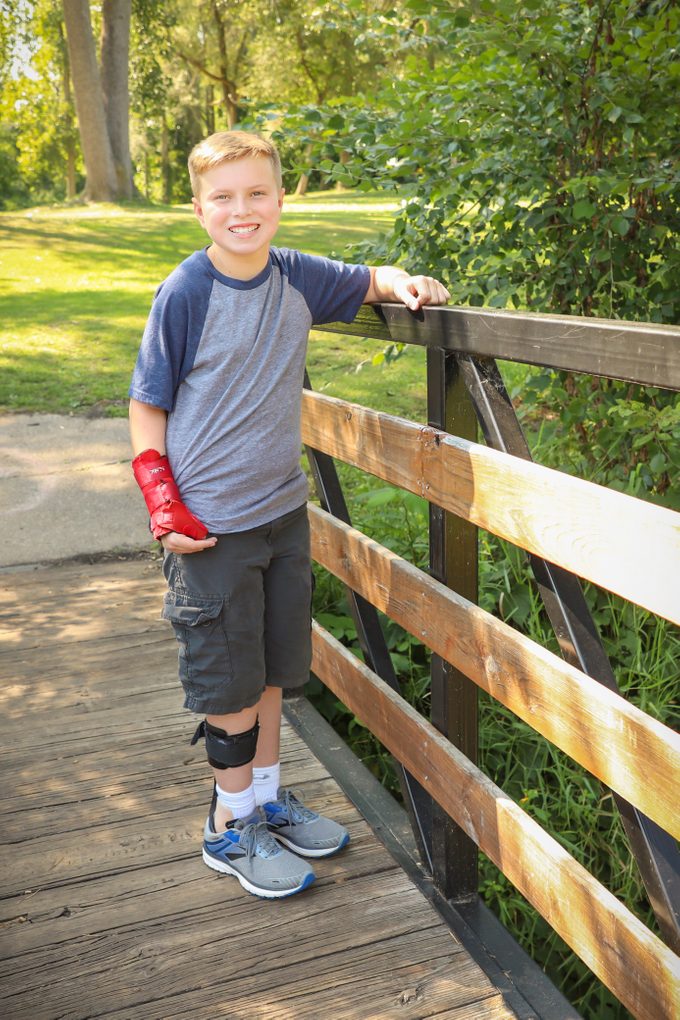This Woman’s 6-Year-Old Son Had a Massive Stroke Right in Front of Her
Updated: Jul. 01, 2022
A mother reveals her son's stroke symptoms, and how she helped him get the necessary stroke treatment to save his life. Read more to learn about pediatric strokes.

Kristin Denman was watching her six-year-old son David play soccer when things went horribly wrong: “One minute, he was running on the field, and the next he was holding his head and couldn’t speak,” recalls the 48-year-old Michigan mother of two. “I’d just read something about stroke, and as I saw the palsy set into his face, I knew that’s what I was seeing.”
A stroke in someone so young might seem like a rare thing, but pediatric stroke is actually one of the top 10 causes of death in children between the ages of one and 19, according to the American Heart Association and the American Stroke Association. Here’s what you need to know.
Remember the FAST acronym
Denman remembered the classic symptoms thanks to the FAST acronym (Facial drooping, Arm weakness, Speech difficulties and Time) used by the American Stroke Association and the National Stroke Association.
Face: drooping or numbness on one side
Arm: weakness or numbness in one arm
Speech: slurring words or having trouble talking
Time to call 911: rapid treatment is essential to reduce damage to the brain
In children, additional symptoms include sudden severe headache, weakness or numbness on one side of the body, confusion or difficulty speaking, vision impairment, and loss of balance or coordination.
“Children are also more likely to present with a seizure when they have a stroke, or in some cases can be difficult to wake up,” says Salman Azhar, MD, director of stroke at Lenox Hill Hospital in New York City. Head pain can be a sign in adults too.
Be your child’s advocate

Even though Denman suspected stroke, she still had to convince the doctors, who were focusing instead on head trauma. “They didn’t believe a child could have a stroke,” she says. This isn’t uncommon, says Jessica Spear, president and founder of the World Pediatric Stroke Association. “You need to be your child’s best advocate,” says Spear, whose son Brendon had a stroke before birth.
It took 19 months to get a diagnosis, even though she noticed classic warning signs early on, like favoring one side of his body. “They told me I was a paranoid parent,” she says. (Learn more about signs of stroke you should never ignore.)
“If David had been treated right away to remove the clot, he wouldn’t have had as much brain damage to the frontal lobe,” says Denman. For the best outcome, patients need to get treatment as early as possible, and hopefully no later than three-and-a-half to four hours after symptoms start.
The treatment may include blood-thinning medication and surgery, depending on the cause. Strokes occur when there is a reduction of blood supply to the brain, and there are two main types—ischemic, which is due to a blocked vessel (usually a clot), and hemorrhagic stroke, which is caused by bleeding in the brain. While blood-thinning medications are used to treat clots, they aren’ t used to treat hemorrhagic strokes.
Know about other causes of stroke
After doctors ran tests, they discovered David had suffered an ischemic stroke—a clot blocked the blood supply to his brain—probably caused by a tackle-football accident the week before.
“He’d hit his head with enough force to knock his glasses off, but we’d been looking for signs of concussion and didn’t even think about stroke,” says Denman. “Turns out, the force from the tackle caused a small cut of the carotid artery [a blood vessel in the neck], which formed a blood clot. One week later as he was running, the clot broke off and traveled to his middle cerebral artery, and stuck there.”
Other causes of stroke in children, says Dr. Azhar, include sickle cell disease and congenital heart defects.
Stroke recovery and a “new” normal

“Six years ago, when my daughter had a stroke before birth, there was no information about stroke in children,” says Kaysee Hyatt, founder Pediatric Stroke Warriors. “I’ve seen huge strides in awareness since my daughter’s diagnosis, and in support groups, and I want to remind parents that they’re not alone.”
Today, at 13 years old, David has re-learned how to walk and talk. He still has cognitive impairment—”It’s just our new normal,” says Denman—and his right arm remains paralyzed. But with the support of his longtime school peers, family (including older brother Ethan), and his own dedication, he’s thriving. After realizing his soccer days may be over, David taught himself basketball and baseball, both of which he plays one-handed—”you just have to see it to believe it,” says dad Jeff Denman of his one-handed pitch-and-catch technique. David’s dedication is paying off—he just made the All-Star team for his second time.
“When David came back from the hospital, he said ‘anything is possible,’ and he’s proven that ever since,” says Jeff. “He’s a testament to the power of determination, medicine, and love. He teaches me every day that there are always options, and always more to strive for. It’s nothing short of a miracle.”
